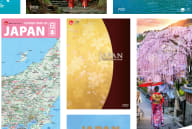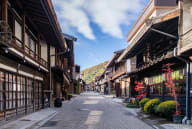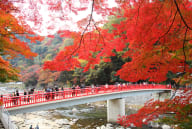Each summer Kyoto Art Centre (KAC) invites a dozen artists, academics, and interested persons to join them for a 3-week cultural learning opportunity in the heart of Japan. This program, established in 1984, introduces artists to the classical performing arts of Japan. This summer, I was fortunate enough to join the Noh class that was taught by masters Ōe, Katayama, and Tamoi. This class celebrates its end with a live performance at the beautiful Ōe Nō stage in Kyoto, famous for both its age and its unique pine tree mural on the stage.

The KAC Traditional Theatre Training was a program I had pinned to my fridge for many years. I reached out for information in 2017 just after graduating from university, filled out my application in 2020, and finally was able to re-submit it in 2022 as the borders re-opened. Amazingly, I was accepted into this unique program.
I left Canada in the middle of July and made my way to Tokyo. I boarded the shinkansen to Kyoto the next morning with my station bento box (suggested through Pinterest travel blogs) in hand and settled in for a peaceful train ride through the countryside towards my rented apartment in Shijo.
I joined the 12 Japanese and international artists on the tatami mats of the Meiji-era ballroom at KAC the next day. We had arrived from places like Italy, Korea, America, and England to take part in this intimate training experience. These classes were taught in English and Japanese, with KAC providing translators and support for the artists. We were also able to take extra Kotozumi classes, Rakugo, and theatre workshops alongside our scheduled evening Noh training.

Our sensei wanted us to experience as much as possible during our short stay. They brought in the historical wooden masks belonging to the theatre. We watched an actor be dressed and sewn into their silk kimonos, golden fans in hand, and their horsehair wigs styled and tied in place.
After the first week, I had a routine. In the mornings I would wake up early and take a train to a new area of Kyoto. I would explore Gion and its iconic temples. The bamboo forest and the romantic train. I would catch a Kabuki show on the Kamo river, a Noh and Rakugo show across the city or spend my time in countless museums. I would head towards the shopping districts like Nishiki market to grab a delicious lunch or dinner too. In the evenings I would join the artists and cool down in the ballroom before slipping on our tabi to practice for 2-3 hours. We occasionally ended the evening at an izakaya close to KAC before heading out separate ways at the train station.

On our days off we would venture further from the city. We took the train to Nara to see the deer and stunning temples. The Inari shrine to hike the 1000 gates, stopping for tea and sweets on the way down. The class even traveled to Osaka to see the National Bunraku Theatre’s productions thanks to the organization of the KAC staff. Each of these days could be a blog post alone we packed so much in.
Three weeks passed in a blink. We were soon standing at the small door leading to the Noh stage. We dressed in our yukata and hakama with our fans tucked into their strings. The chorus enters the stage ahead of us, sitting elegantly in seiza. All that was left was to perform for the gods and leave the stage proud of our time in Japan.

The Kyoto Art Center created a once-in-a-lifetime experience for me as an artist. I would never have imagined I would be able to set foot on a stage in Japan, let alone study from masters of the art form. I got to do this while exploring a country that I have come to love over the years, in a city I had been waiting to see since 2017.
On the way back to Canada, I gave myself a few extra days in Tokyo. I had gone to the Tokyo National Museum and walked through a Noh exhibition. I sat and watched the actors perform a rendition on the screen and laughed, realizing my teachers were on display, and their costumes pinned on the wall. All I could say in my surprise to the man sitting next to me was "that's my sensei" with a massive amount of pride.
Written by Laura-Beth Bird
The opinions expressed in the above article do not reflect the views of JNTO. All content and images are property of the writer unless otherwise specified.
If you would like to submit an article to our Travellers' Blog, click here.



























































